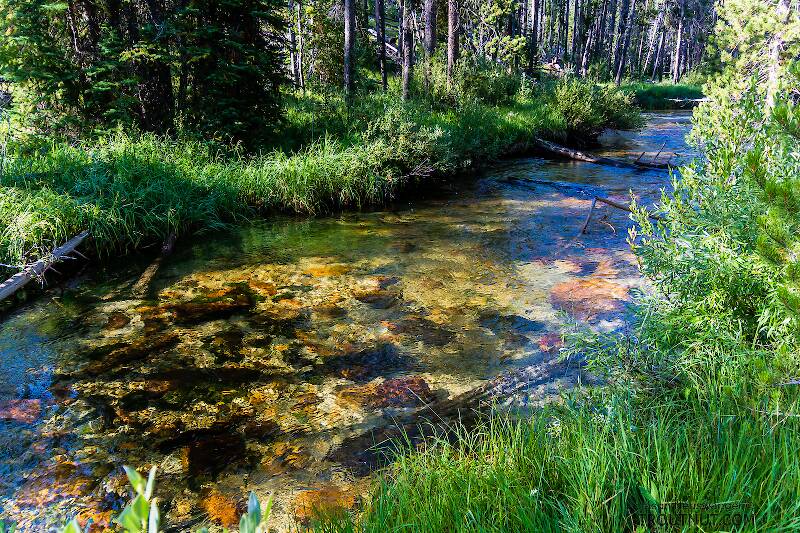
Blue-winged Olives
Baetis
Tiny Baetis mayflies are perhaps the most commonly encountered and imitated by anglers on all American trout streams due to their great abundance, widespread distribution, and trout-friendly emergence habits.


Mayfly Species Procloeon rubropictum (Tiny Sulphur Duns)
Where & when
This species is most common in the East, and is a sporadic emerger.In 22 records from GBIF, adults of this species have mostly been collected during June (41%), July (32%), and August (23%).
Species Range
Physical description
Most physical descriptions on Troutnut are direct or slightly edited quotes from the original scientific sources describing or updating the species, although there may be errors in copying them to this website. Such descriptions aren't always definitive, because species often turn out to be more variable than the original describers observed. In some cases, only a single specimen was described! However, they are useful starting points.
Male Spinner
Wing length: 4 mm
Abdominal tergites 2-6 of male imago yellowish white; small red submedian dots and traces of ruddy median line.
Turbinate eyes long and narrow, oval; in dried specimen, shriveling to form lunate discs, leaving central portion of head free. Head blackish brown. Thorax deep brown; margins of mesonota and metanota and sutures slightly ruddy. Legs wholly pale yellowish white. Wings hyaline. Abdominal segments 2-6 pale yellowish white; a reddish inverted Y-shaped mark on tergite 2; tergites 3-6 with slight traces of a reddish median line, and small red submedian dots on the posterior margins; above the spiracular line and near the central area of each tergite is a faint red dot. Tergites 7-10 bright red-brown; sternites opaque whitish. A broken black line marks the spiracular area. Tails and forceps whitish. Plate between the bases of the forceps limbs a rectangular projection (see fig. 168).
The ruddy dots and broken black line of the abdominal tergites separate this species from C. insignificans (now a synonym of Procloeon insignificans); the darker thorax and ruddy markings distinguish it from C. simplex (now a synonym of Procloeon simplex).
Start a Discussion of Procloeon rubropictum
References
- Caucci, Al and Nastasi, Bob. 2004. Hatches II. The Lyons Press.
- Knopp, Malcolm and Robert Cormier. 1997. Mayflies: An Angler's Study of Trout Water Ephemeroptera . The Lyons Press.
- Needham, James G., Jay R. Traver, and Yin-Chi Hsu. 1935. The Biology of Mayflies. Comstock Publishing Company, Inc.
Mayfly Species Procloeon rubropictum (Tiny Sulphur Duns)
Species Range
Common Name
Resources
- NatureServe
- Integrated Taxonomic Information System
- Global Biodiversity Information Facility
- Described by McDunnough (1923)

